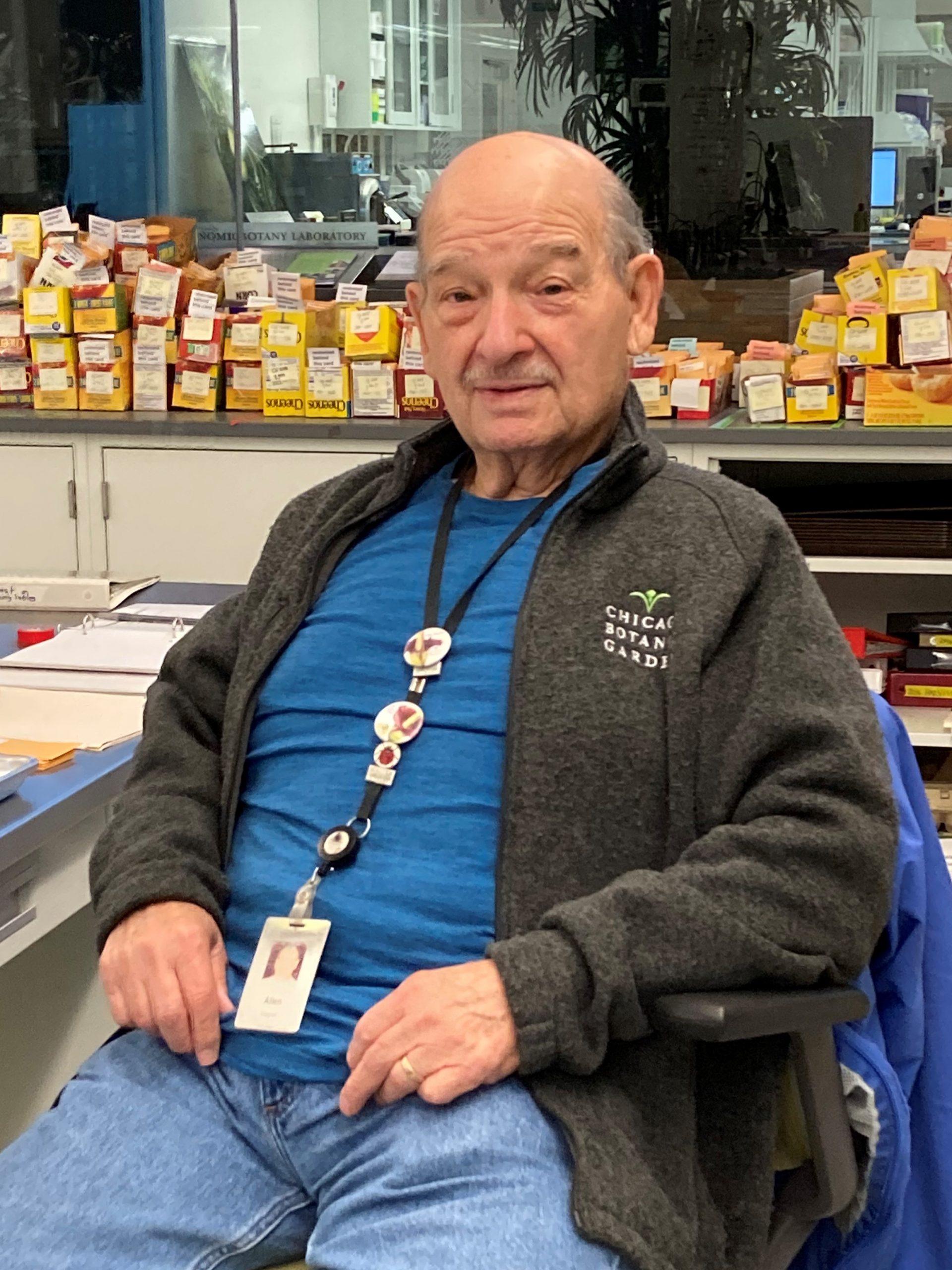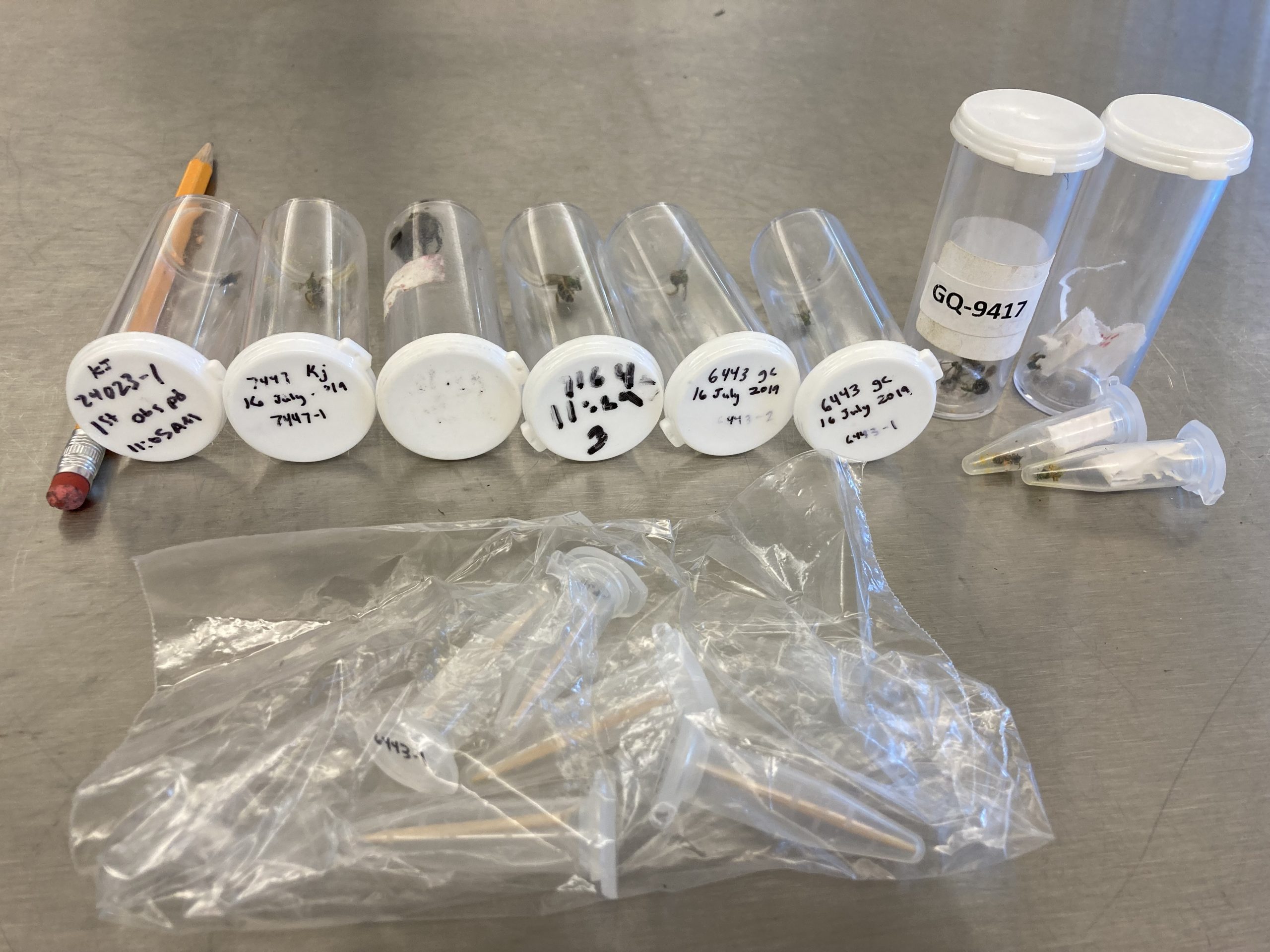Visiting Minnesota to plant seeds last week was a welcome break from sitting at a desk all day. However, we were glad to be back in the lab this week. On Thursday, I finished the inventory of the remnant 2021 heads, so they are now ready to be cleaned by volunteers.
We have a great crew of volunteers this fall. Suzanne wins the award for the longest volunteer record; she has been helping the Echinacea Project since 1999! In contrast, Elif joined the lab in 2019 and is our newest volunteer. So far, all of the volunteers have been cleaning seed heads, an important early step in the ACE workflow. However, many of them specialize in other steps of the process such as quality control, scanning, randomization, weighing, x-raying, counting, or classifying. Once we have made a dent in the backlog of seed heads, the volunteers will be able to diversify and find the steps that they enjoy most.

Marty is an expert at the scanner and x-ray machine 
Elif started in 2019 has only cleaned heads so far 
Mike has pinned all the bees for the Yellow Pan Trap project 
We have yet to discover Luk’s favorite job! 
Suzanne specializes at inventory and randomization 
Allen is a pro at counting and classifying achenes
Our other project this week was to clean out the freezer in the lab. The freezer mainly contained coolers of empty vials that were used to collect bees for the Yellow Pan Trap (YPT) project. As Mia and I sorted through the vials, we also discovered one cooler that still contained bees! Why were these bees collected? To what project do they belong? Why haven’t they been pinned like all the other bees? According to Detective Stuart, “We have a mystery to solve. First stage is to gather evidence. (Don’t disturb the scene of the crime.)” I followed Stuart’s instructions and returned the cooler to the freezer. After doing some sleuthing, I now suspect that vial GQ-9417 contains YPT specimens that were collected on 31 July 2019. The other vials, however, remain a mystery. If anyone can identify the suspects or has information about the day of the crime, 16 July 2019, please let me know.








Leave a Reply